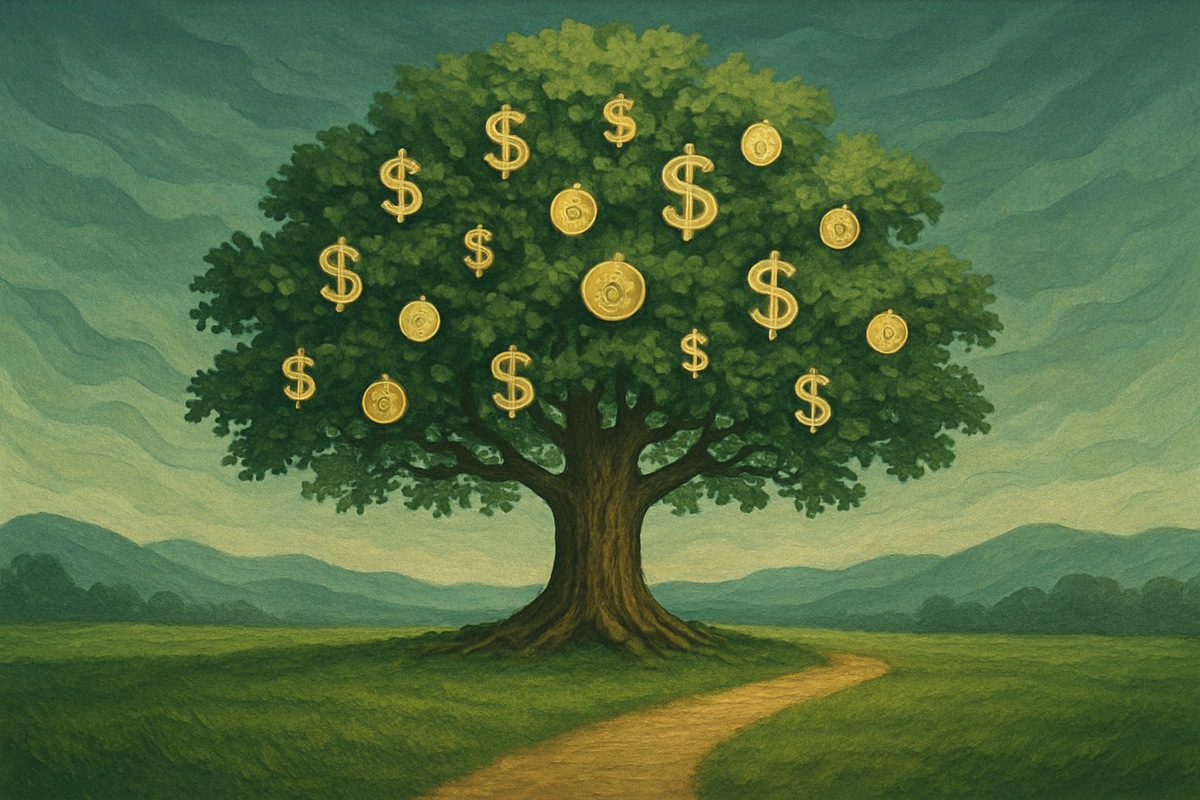
As the calendar turns to November 2025, investors are navigating a financial landscape marked by both persistent opportunities and evolving challenges. In this environment, the allure of "no-brainer dividend stocks"—companies that offer reliable, consistent, and growing income streams with seemingly minimal fuss—remains a cornerstone for those seeking stability and long-term wealth accumulation. These aren't merely high-yield traps, but rather financially robust entities that have demonstrated an enduring commitment to returning value to shareholders, making them particularly attractive in a market that rewards both resilience and foresight.
The concept of a "no-brainer dividend stock" centers on identifying companies with an almost guaranteed ability to pay and increase their dividends over time, irrespective of short-term market fluctuations. This strategy appeals to a broad spectrum of investors, from retirees seeking steady income to younger individuals looking to compound wealth through dividend reinvestment. However, the current market climate, influenced by global economic shifts, inflation concerns, and technological advancements, necessitates a keen eye for truly sustainable dividend payers, moving beyond superficial yield percentages to scrutinize underlying business fundamentals.
Decoding Dividend Dependability: Criteria and Current Contenders
Identifying a "no-brainer dividend stock" requires a rigorous adherence to fundamental financial principles, a methodology consistently championed by leading financial experts, including those at The Motley Fool. The core criteria revolve around a company's financial health, its history of dividend payments, and its ability to sustain these payouts into the future.
Firstly, a consistent and growing dividend track record is paramount. Companies that have raised their dividends for decades, often earning titles like "Dividend Aristocrats" (25+ years of increases) or "Dividend Kings" (50+ years), exemplify this reliability. This history is a testament to their financial strength across various economic cycles. Secondly, a healthy financial position with robust cash flow is non-negotiable. Strong free cash flow is the lifeblood of dividends, ensuring that payments are covered without compromising reinvestment or relying on excessive debt. A sustainable payout ratio, typically between 30% and 60% of earnings, indicates that the dividend is well-covered and has room for future growth, steering clear of precarious high ratios that signal potential cuts.
Furthermore, a strong competitive advantage or "economic moat" is crucial. This could be a dominant market share, an indispensable product or service, or a powerful brand name that protects the company from competitors and ensures consistent profitability. Finally, long-term profitability and predictable earnings growth, coupled with a reasonable valuation, prevent investors from overpaying for future income.
As of November 2025, several companies have been highlighted by financial experts for their "no-brainer" dividend potential:
- Toyota Motor (NYSE: TM): Despite adjusting payouts based on cash flow rather than strict streaks, Toyota is recognized for strong sales, cash flows, and a 3.2% yield, reflecting its leadership in the automotive industry.
- Texas Instruments (NASDAQ: TXN): This semiconductor giant has consistently increased its dividend annually since 2004, showcasing its robust position in a critical technological sector.
- Lowe's (NYSE: LOW): A true Dividend King, Lowe's has an impressive 62 consecutive years of dividend increases, underscoring its stability in the home improvement retail sector.
- NextEra Energy (NYSE: NEE): As a leader in renewable energy, NextEra Energy offers significant growth potential tied to the global energy transition, making its dividend particularly attractive for future-oriented investors.
- Realty Income (NYSE: O): Known as "The Monthly Dividend Company," Realty Income boasts a long track record of consistent dividend growth, appealing to income-focused investors.
- Philip Morris International (NYSE: PM): This tobacco giant has consistently raised its dividend since going public, demonstrating resilience in its established market.
- United Parcel Service (NYSE: UPS): While sometimes considered a high-yield exception, UPS's critical role in global logistics makes it a strong contender for reliable income.
- Chevron (NYSE: CVX) and Enterprise Products Partners (NYSE: EPD): These energy sector stalwarts are noted for minimizing risk with business models that protect high-yield income streams. Chevron, an integrated oil and gas giant, maintains a 37-year streak of dividend increases with a 4.4% yield.
- Lockheed Martin (NYSE: LMT), American Water Works (NYSE: AWK), and Watsco (NYSE: WSO): These companies are frequently cited for their ultra-reliable dividends, with Lockheed Martin boasting 22 consecutive years of dividend increases in the defense sector.
- Sysco Corporation (NYSE: SYY): Forbes highlighted Sysco in September 2025 for its market share, strong balance sheet, and 56 years of dividend growth in the food distribution industry.
- American Electric Power (NASDAQ: AEP), Ford Motor (NYSE: F), and Spire (NYSE: SR): Morningstar noted these for their healthy balance sheets and yields in November 2025.
- Enbridge (NYSE: ENB), Black Hills (NYSE: BKH), and Dominion Energy (NYSE: D): Nasdaq reiterated these utility stocks as safe options, particularly appealing for those seeking stability amidst market uncertainty.
- Toronto-Dominion Bank (NYSE: TD): Barchart.com noted its nearly 170-year dividend history, enduring major economic crises.
- Procter & Gamble (NYSE: PG): A consumer staples giant, P&G is a perennial favorite for its strong brand portfolio and performance in economic downturns.
The Enduring Appeal: Winners in a Volatile World
The companies frequently cited as "no-brainer dividend stocks" are inherently positioned to "win" in various market conditions due to their foundational strengths. Their business models are often characterized by stability, essential products or services, and significant barriers to entry for competitors. For instance, Lowe's (NYSE: LOW) benefits from the consistent, albeit cyclical, demand for home improvement, and its established brand and distribution network create a formidable moat. Similarly, utility companies like NextEra Energy (NYSE: NEE) and American Electric Power (NASDAQ: AEP) operate in regulated markets with predictable revenue streams, making their dividends exceptionally secure.
Integrated energy companies like Chevron (NYSE: CVX), while exposed to commodity price volatility, mitigate risk through diversified operations spanning exploration, production, refining, and marketing. Their massive scale and infrastructure require enormous capital, creating a high barrier to entry for new competitors. Tech stalwarts such as Texas Instruments (NASDAQ: TXN), with their specialized semiconductor products, are deeply embedded in various industries, ensuring consistent demand and robust cash generation. Consumer staples giants like Procter & Gamble (NYSE: PG) thrive because their products are necessities, providing resilient demand even during economic downturns. These companies are less susceptible to rapid technological obsolescence or fickle consumer trends, allowing them to generate the consistent profits necessary to fuel their dividend programs. Their ability to weather economic storms and consistently reward shareholders is what truly distinguishes them as "no-brainer" choices for long-term investors.
Dividend Investing: A Bedrock in Broader Market Trends
The pursuit of "no-brainer dividend stocks" is not merely a niche investment strategy; it represents a fundamental approach to wealth building that resonates deeply with broader market trends and investor psychology. In an era where growth stocks can experience significant volatility and rapid shifts in valuation, dividend-paying companies offer a tangible return that can cushion portfolios during downturns and provide a compounding effect over the long term. This strategy fits into a broader trend of investors seeking more predictable returns and capital preservation, especially in environments of elevated inflation or interest rate uncertainty.
Dividend investing also plays a crucial role in diversification. By allocating a portion of a portfolio to high-quality dividend payers, investors can reduce overall risk and volatility. These companies often hail from mature industries such as utilities, consumer staples, healthcare, and industrials, which tend to be less correlated with the more speculative growth sectors. Furthermore, the act of a company consistently raising its dividend is often interpreted by the market as a strong signal of financial health and management confidence in future earnings. Regulatory environments generally favor stable, well-capitalized companies, and there are no significant policy shifts currently threatening the fundamental ability of these companies to pay dividends. Historically, dividend stocks have demonstrated resilience, often outperforming non-dividend payers over extended periods, particularly during bear markets. Their steady income stream can also help combat inflation, as dividends tend to grow over time, offering a rising income floor.
The Path Forward: Navigating Future Dividend Opportunities
Looking ahead, the landscape for dividend investing will continue to evolve, but the core principles for identifying "no-brainer" stocks are likely to remain steadfast. In the short term, investors should monitor interest rate movements and inflation, as these can influence the relative attractiveness of dividend yields compared to fixed-income alternatives. However, the long-term outlook for quality dividend growers remains positive, particularly as demographic trends point towards an aging population increasingly reliant on investment income.
Companies themselves may continue to pivot towards more sustainable dividend policies, prioritizing consistent growth over excessively high yields that are difficult to maintain. The rise of environmental, social, and governance (ESG) investing may also influence dividend policies, with companies demonstrating strong ESG practices potentially being viewed as more stable and long-term oriented, thus appealing to a wider pool of dividend investors. Emerging market dividend stocks could also present new opportunities as these economies mature and corporate governance improves, though they typically carry higher risk. For "no-brainer" seekers, the focus will remain on established players with proven track records. Market opportunities may emerge in sectors undergoing stable, long-term growth, such as renewable energy infrastructure (e.g., NextEra Energy (NYSE: NEE)) or specialized industrial components (e.g., Watsco (NYSE: WSO)), where consistent demand supports robust cash flows. Challenges might include unforeseen economic shocks or disruptive technologies, but the inherent moats of these "no-brainer" companies are designed to mitigate such risks.
A Foundation for Financial Resilience: Key Takeaways for Investors
In wrapping up, the pursuit of "no-brainer dividend stocks" in the current market environment of November 2025 remains a highly prudent strategy for investors seeking both income and capital appreciation. The key takeaway is to prioritize quality and sustainability over raw dividend yield. A high yield can sometimes be a "dividend trap," signaling underlying business troubles rather than a genuine opportunity. Instead, investors should focus on companies with a demonstrated history of consistent dividend growth, strong balance sheets, robust free cash flow, and a sustainable payout ratio.
Moving forward, the market will likely continue to reward companies that exhibit financial discipline and a clear commitment to shareholder returns. Investors should watch for continued earnings growth, as this is the engine that drives future dividend increases. Furthermore, paying attention to the competitive landscape and economic moats of potential dividend investments will be crucial. The lasting impact of investing in these reliable income generators is the powerful effect of compounding returns through dividend reinvestment, which can significantly boost overall portfolio performance over the decades. By focusing on these unshakeable pillars of dividend investing, individuals can build a foundation for long-term financial resilience and steadily grow their wealth, irrespective of short-term market noise.
This content is intended for informational purposes only and is not financial advice

















